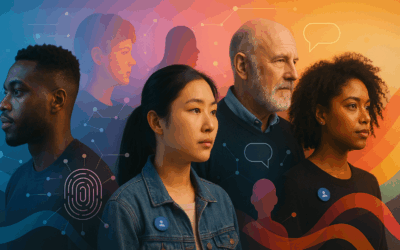What are the 72 genders?
At 72gender.com, we provide clear and accessible information about the 72 gender identities that go beyond the traditional male and female categories. The term 72 gender represents a diverse and inclusive spectrum of gender identities, helping people find the language and support to understand and express themselves.
Our mission is to build a respectful and educational space where anyone—whether exploring, questioning, or learning—can discover reliable information about gender diversity and the meaning behind each of the 72 gender identities. We aim to make the concept of 72 gender more visible, approachable, and meaningful.
We believe that respecting someone’s self-identified gender is a fundamental part of creating a more inclusive and accepting world. By encouraging understanding, empathy, and open-minded learning, we help build awareness of all 72 genders and celebrate every person’s unique gender journey.
All 72 genders
Information about the 72 genders

Latest blogs
Identity trends in 2025 — How we define ourselves is evolving
by Sophie, writer at 72gender.com Identity isn’t a box I can tick anymore — and I don’t think I’m alone in that. Over the past year, I’ve heard from readers who feel their sense of self is shifting: in gender, in culture, in work, even in how they show up online. In...
Where the World Stands in 2025
By Sophie – writer at 72gender.com In 2025, conversations around gender identity are more visible than ever. From parliamentary debates to school policies, gender has become both a personal truth and a political topic. But how different that conversation looks across...
Varför 72gender.com finns – och vad listan över 72 könsidentiteter betyder
Av Sophie – skribent på 72gender.com Världen blir allt mer mångfacetterad, och vårt sätt att förstå kön och identitet har för länge sedan lämnat den traditionella indelningen i “man” och “kvinna”. Allt fler människor känner att dessa gamla kategorier inte speglar...
Por qué existe 72gender.com y qué significa la lista de los 72 géneros
Por Sophie – escritora en 72gender.com El mundo se está volviendo cada vez más diverso, y nuestra comprensión del género y la identidad ya no puede limitarse a las categorías tradicionales de "hombre" y "mujer". Muchas personas sienten que estas etiquetas antiguas no...
Warum 72gender.com existiert – und was die Liste der 72 Geschlechter bedeutet
Von Sophie – Autorin bei 72gender.com Unsere Welt wird immer vielfältiger. Auch unser Verständnis von Geschlecht und Identität lässt sich längst nicht mehr auf die traditionellen Begriffe „männlich“ und „weiblich“ reduzieren. Immer mehr Menschen spüren, dass diese...
Waarom 72gender.com bestaat en wat de lijst van 72 genders betekent
Door Sophie — blogschrijver bij 72gender.com De wereld wordt steeds diverser, en onze kijk op gender en identiteit past al lang niet meer in het strakke hokje van ‘man’ of ‘vrouw’. Steeds meer mensen voelen dat traditionele labels niet in lijn zijn met hun innerlijke...
Sophie Is Back – And So Are Our Blogs on Gender, Identity & LGBTQ+ Life
We’re excited to share that our blog is coming back to life—this time with a fresh voice and renewed energy. Sophie, our new weekly writer, is bringing honest, heartfelt, and thought-provoking stories to 72gender.com.
With over 90 past blog posts already published on topics like gender identity, LGBTQ+ experiences, coming out, and chosen families, we’re proud of what we’ve built. And now, we’re taking it further.
Sophie will dive into everything from self-love and gender exploration to breaking norms and embracing diversity—always with care, authenticity, and community in mind. Whether you’re new to the spectrum or have been walking this path for years, there’s something here for you.
New blogs every week. New perspectives. Same mission: representation, connection, and understanding.

At what age does a child understand gender identity?
Your child may have questions about gender identity at any stage of life:
2-3
Age 2 to 3
Children this age know the difference between boys and girls. They can see themselves as a girl or a boy regardless of their sexual anatomy. They can even accept other genders who are still normal and healthy.
4-5
Age 4 to 5
At this age, children understand their gender identity. But as we age, we become more aware of gender roles, expectations, and stereotypes. For example, we believe that certain toys and clothes are only for boys or girls. At this age, your child may begin to express their gender more confidently. B. Prefers or dislikes wearing dresses every day.
6-7
Age 6 to 7
Children become more confident in themselves and their gender identities and are less afraid to express their gender. However, children who identify themselves as different from the gender they were assigned at birth may experience social anxiety and stress when they realize they don't fit into either category.
Gender identity
Gender identity, gender expression and non-binarity
Not all children feel like boys or girls, and not all adults feel like men or women. That's what gender identity is. Gender identity describes how someone feels about their body. This is independent of biological sex. Biological sex is the sexual organs that a person is born with. Also, some people are born with biological gender differences. After giving birth, it is not always clear whether it will be a boy or a girl. This is also called intersex. Gender expression refers to how one expresses one's gender identity. This has to do with how someone dresses or behaves, for example. This could be a 'typical girl' or a 'typical boy', but all variations are possible.
72 genders summarized in one list
72 Gender list
All genders are summarized in one list by 72gender.com. Read a description of each gender here and perhaps there is some form of recognition.
72 genders summarized in one chart
72 Gender chart
All genders are summarized in one graph by 72gender.com. Read here which genders are in the chart and view their symbols.
Meaning
Psychological gender
Gender represents aspects of gender behavior and identity that are distinct from physical and biological aspects.

Expression

Attraction

Identity

Discover your gender
Identity, expression, attraction and sex
Gender is something everyone thinks they understand, but for most it's complicated. Gender is not binary, it is not either/or. Often it is and/and. A little bit of this and a little bit of that.
People are often hesitant to ask questions about sexuality and gender in surveys. What if I say the wrong thing or use the wrong terminology? What if I offend someone? These are understandable concerns.
Have you ever questioned your gender identity?
As awareness of gender diversity grows, more people feel safe to explore their own gender identity. This journey can be confusing, challenging long-held beliefs shaped by society and cissexism. But questioning your gender is not a problem—it's a natural part of self-discovery. Whether you're young or older, gender exploration can happen at any point in life. There’s no right or wrong way to feel. Gender is personal, fluid, and can evolve over time. Taking time to reflect can uncover meaningful experiences and help you better understand who you truly are.







